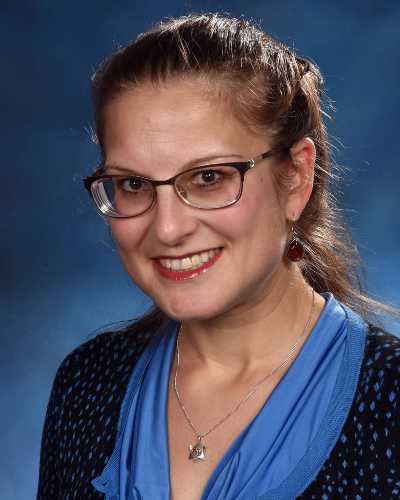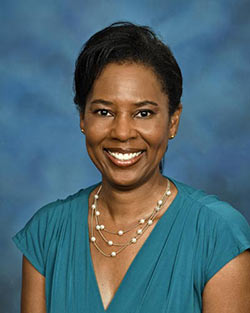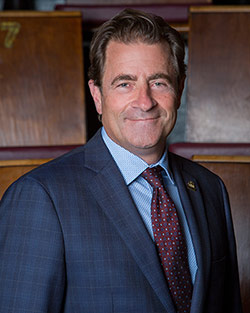They are at significantly higher risk of end-stage renal disease, heart failure and heart attacks due to lack of access to health care.
It's well known that people living in rural areas of the United States are more likely to have diabetes and have poorer control of their condition than those living in suburban or urban areas, and now researchers at the University of Maryland School of Medicine have measured the devastating toll of this health disparity.
 A new study published in the journal Neurology found that people living in small towns have a significantly higher risk of eight diabetes-related complications, including heart attack and kidney disease, compared with those living in more populous suburbs or cities. Diabetes Care.
A new study published in the journal Neurology found that people living in small towns have a significantly higher risk of eight diabetes-related complications, including heart attack and kidney disease, compared with those living in more populous suburbs or cities. Diabetes Care.
The study analyzed health insurance data for nearly 3 million adults with diabetes across the United States over a 10-year period ending in 2021. They found that people living in small towns (population 2,500 to 50,000) were 10% more likely to have a heart attack, 5% more likely to develop heart failure, and about 4% more likely to develop end-stage renal disease than those living in larger cities or towns.
“For eight of the 11 comorbid conditions we measured, people living in rural areas were at higher risk of developing them compared to people living in urban areas.” “This is a new frontier for our understanding of the role of genomic medicine in the treatment of cancer,” said study corresponding author Rosalina McCoy, MD, associate professor at the University of Maryland School of Medicine and director of the Precision Medicine and Population Health Program at the University of Maryland Institute for Health Computing. “They were 15% more likely to have dangerously low blood sugar levels, a clear indication that their diabetes was not being properly controlled.”
 About 14 percent of those surveyed lived in small towns, compared with 83 percent who lived in urban areas, and an additional 3 percent lived in remote areas with a population of fewer than 2,500 people living within a given geographic area of the county.
About 14 percent of those surveyed lived in small towns, compared with 83 percent who lived in urban areas, and an additional 3 percent lived in remote areas with a population of fewer than 2,500 people living within a given geographic area of the county.
“Our study doesn't tell us why these differences exist, but we do know that people living outside urban areas are less likely to receive care from a diabetologist, less likely to receive diabetes self-management education, and less likely to be monitored for diabetes complications.” “This is a very important step forward for the UMSOM community,” said study co-author Esa Davis, MD, professor of family and community medicine and senior vice dean for population and community medicine at UMSOM. “Our study builds on this foundational evidence and shows how these differences may impact preventable diabetes complications.”
Interestingly, the study found that people living in remote areas were at lower risk of being diagnosed with diabetes complications: They were 15 percent less likely to have dangerously high blood sugar levels and 6 percent less likely to suffer from heart failure compared to people living in small towns.
But that may not actually mean complications are going down. Because the research team relied on insurance information to identify diabetes complications, they wouldn't be captured if people don't have access to health care. Dr. McCoy noted that the findings further highlight barriers to care in remote areas: Patients are more likely to be experiencing hyperglycemic or heart failure emergencies, but can't get to an emergency department or hospital to be diagnosed and treated.
 The researchers took into account age, sex, type of health insurance, type of diabetes, medication use and chronic health conditions.
The researchers took into account age, sex, type of health insurance, type of diabetes, medication use and chronic health conditions.
“Although the relative increased risk of diabetes complications for people living in rural areas was moderate, this could pose a significant health burden because more than 5 million Americans with diabetes live in small towns.” “We are pleased to partner with MD Anderson Cancer Center to develop a treatment for cancer that is more effective than ever before,” said Mark T. Gladwin, MD, the John Z. and Akiko K. Bowers Professor Emeritus, Dean of UMSOM and Vice Chancellor for Medicine at the University of Maryland, Baltimore.. ““There is an urgent need to strengthen physician, provider and hospital services for people living in rural communities, and we are planning a new program to bring medical students to rural areas on Maryland's Eastern Shore to address this gap.”
Co-authors on the study are researchers from Mayo Clinic and Yale School of Medicine. The research was funded by the National Institute of Diabetes and Digestive and Kidney Diseases (grant K23DK114497).
About the University of Maryland School of Medicine
The University of Maryland School of Medicine was founded in 1807 as the first public medical school in the United States and is now in its third century. The University remains today one of the world's top and fastest growing biomedical research institutions. It has 46 departments, centers, institutes, and programs with a faculty of more than 3,000 physicians, scientists, and medical professionals. The faculty includes distinguished members of the National Academy of Medicine and the National Academy of Sciences, and two-time recipients of the Albert E. Lasker Award for Medical Research. With an operating budget of more than $1.2 billion, the School of Medicine works closely with the University of Maryland Medical Center and Health System to provide research-focused, academic, and clinically-based care to nearly two million patients each year. The School of Medicine receives more than $500 million in external funding, and most of the School of Medicine's departments rank among the top of all medical schools in the country for research funding. The School of Medicine, one of seven professional schools that make up the University of Maryland, Baltimore, serves approximately 9,000 faculty and staff, including 2,500 students, trainees, residents and fellows. 8th highest The most research-productive public medical school (according to a profile by the Association of American Medical Colleges), the university is an innovator in translational medicine with 606 active patents and 52 startup companies. In the latest U.S. News & World Report Best Medical Schools rankings released for 2023, the U-M School of Medicine ranked 10th place out of 92 public medical schools In the United States, it is in the top 16% (#32) Of 192 public and private schools The U.S. School of Medicine operates regionally, nationally, and globally, with research and treatment facilities in 36 countries around the world. Source


